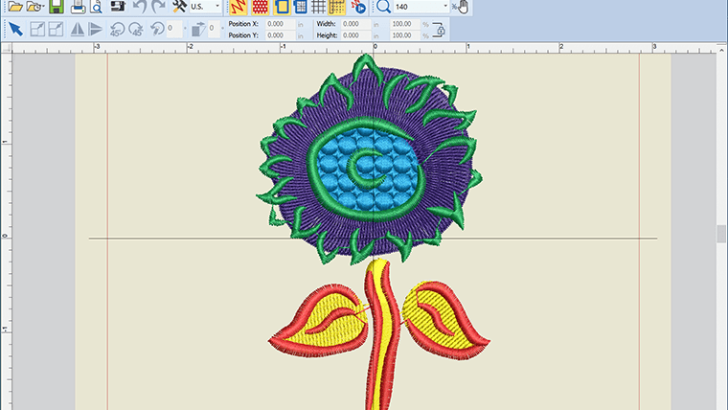Understanding embroidery file formats is essential for U.S. crafters who want to create intricate and precise designs using sewing machines or embroidery machines. These files act as digital blueprints that guide the machine on where to stitch, how to move the needle, and what colors to use. With a variety of file types available, it can be overwhelming to know which one to choose. This article will explore the most common embroidery file formats—DST, PES, EXP, and more—and explain their unique features, benefits, and compatibility with different embroidery machines.
What Are Embroidery File Formats?
Embroidery file formats are digital instructions that tell an embroidery machine how to stitch a design. Each format is developed by specific manufacturers and has its own structure and set of commands. While some formats are proprietary and only work with certain machines, others are more universal. For U.S. crafters, understanding these formats helps in selecting the right design for their equipment and ensures smooth execution of their projects.
Common Embroidery File Formats
DST (Digitized Stitch Tool)
DST is one of the most widely used embroidery file formats, especially in the United States. It was developed by Tajima, a leading manufacturer of industrial embroidery machines. DST files are compatible with many domestic and commercial embroidery machines, making them a popular choice among hobbyists and professionals alike. The format supports multiple colors, thread changes, and various stitching techniques, allowing for detailed and complex designs. However, DST files may require conversion to other formats if they are to be used on non-Tajima machines.
PES (Pegasus Embroidery System)
PES is another common format, primarily associated with Brother embroidery machines. It was developed by Pegasus, a company known for its high-quality embroidery software. PES files are widely supported by Brother machines and offer flexibility in terms of color changes, stitch types, and design adjustments. Many online embroidery shops provide PES files, making it easy for U.S. crafters to access and use them. Like DST, PES files may need to be converted if used on machines from different brands.
EXP (Embrillia eXchange Format)
EXP is a more modern and versatile format, designed for use with Janome and other advanced embroidery machines. It allows for greater precision and customization compared to older formats like DST and PES. EXP files support features such as dynamic color changes, variable stitch lengths, and enhanced stability during stitching. This format is particularly useful for complex designs that require high accuracy, making it a favorite among professional embroiderers in the U.S.
Other Formats: JEF, HUS, SEW, and More
In addition to DST, PES, and EXP, there are several other embroidery file formats used by different manufacturers. JEF is commonly used with Bernina machines, while HUS is associated with Husqvarna Viking. SEW is another format that works with certain models, and each has its own strengths and limitations. U.S. crafters should check their machine’s specifications to determine which formats are supported.
Choosing the Right Format for Your Machine
Selecting the appropriate embroidery file format depends on the type of machine you use. If you own a Brother machine, PES files will likely be your best bet. For those with Janome or similar machines, EXP files may offer better performance. If you have a Tajima-based machine, DST files will be the standard. However, many U.S. crafters opt for universal formats or use conversion tools to ensure compatibility across different devices.
Tips for Working with Embroidery Files
- Check Compatibility: Before purchasing or downloading an embroidery design, confirm that the file format is compatible with your machine.
- Use Conversion Tools: If you encounter a file format that your machine doesn’t support, consider using a file converter to change it into a suitable format.
- Adjust Designs: Some embroidery software allows you to modify designs, such as resizing, repositioning, or changing colors. Take advantage of these tools to customize your projects.
- Test Stitches: Always test a small section of your design before stitching the entire piece to ensure everything looks and functions as expected.
Conclusion
Understanding embroidery file formats is crucial for U.S. crafters who want to achieve high-quality results with their embroidery machines. Whether you’re working with DST, PES, EXP, or another format, knowing the strengths and limitations of each can help you make informed decisions. By choosing the right file type and using the appropriate tools, you can bring your creative visions to life with precision and ease.
